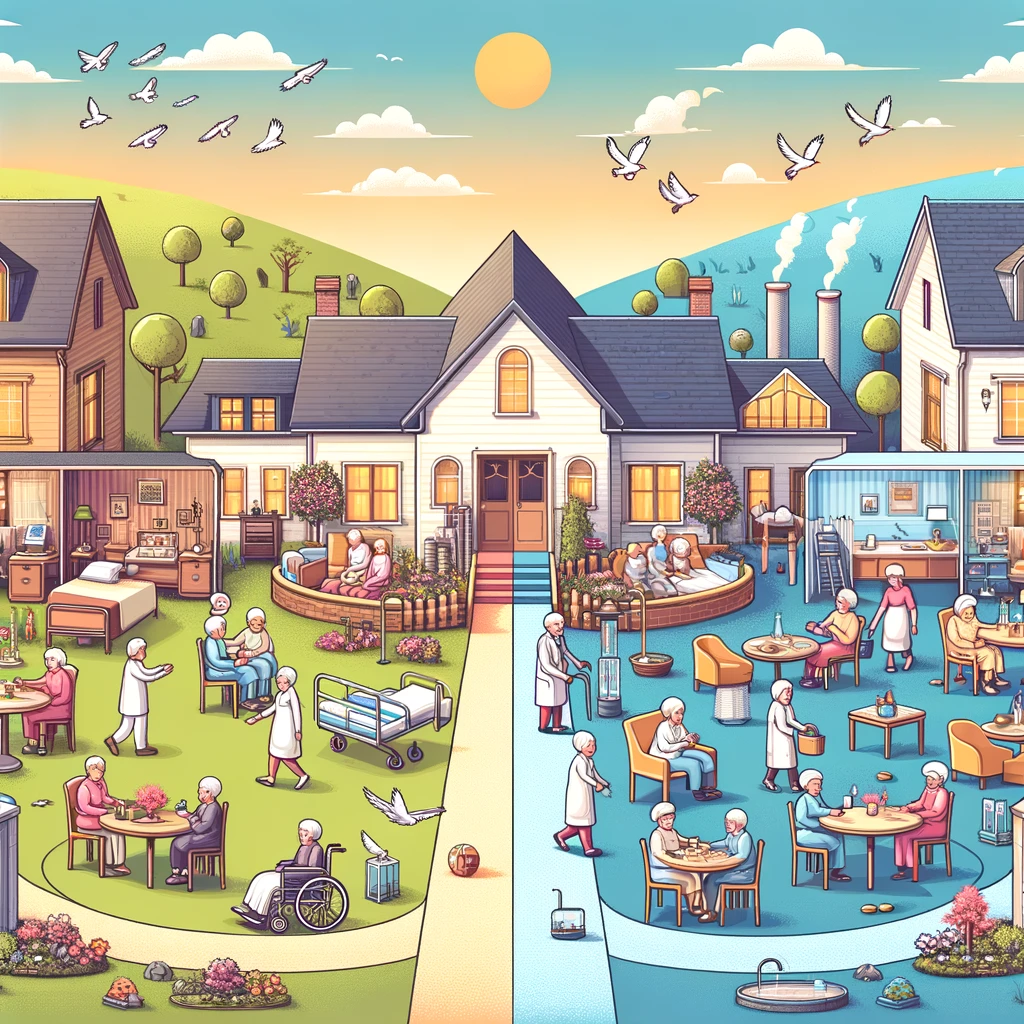The Development of Elderly Care: From Traditional Nursing Homes to Innovative Models
Nursing Homes

 428
428 
The Development of Elderly Care: From Traditional Nursing Homes to Innovative Models
In recent decades, with the increase in life expectancy and changes in demographic structure, the field of long-term care for the elderly has developed significantly. Today's modern nursing homes are very different from the outdated image of a dreary "old age home." Currently, advanced institutions are characterized by high standards of multidisciplinary care, an emphasis on mental well-being alongside physical health, personalized environments, and a variety of options for meaningful engagement. This article will examine the main differences between nursing homes of the past and present, and shed light on the trends and innovations shaping elderly care.
Moving from a narrow medical focus to a holistic perspective, in the past, nursing homes primarily concentrated on the medical and nursing aspects of care. The emphasis was on “keeping” the elderly, medication management, and responding to basic physical needs. In contrast, today there is a broader understanding of the needs of the elderly, and advanced institutions have adopted a holistic approach that includes:
- Addressing psychological, social, and spiritual dimensions alongside medical ones (including programs to prevent loneliness, depression, and maintaining a sense of purpose).
- A multidisciplinary team that includes not only doctors and nurses but also social workers, occupational therapists, physiotherapists, and caregivers.
- Diverse activities for mental stimulation and cognitive abilities preservation (art, music, brain exercises, etc.).
- Encouragement of independence and functioning as much as possible (e.g., through an accessible environment and appropriate assistive devices).
The transition to a more inclusive understanding of the well-being of elderly individuals leads to significant improvements in the quality of life and overall satisfaction of residents in modern nursing homes.
From standard environments to personal spaces, nursing homes were characterized by uniform, “institutional” spaces tailored to the general needs of the elderly. Today, there is an increasing trend toward personalizing the living environment according to each resident's profile and preferences:
- Opportunities to design living spaces in a personal style with furniture and items from home.
- A modular structure that allows varying degrees of privacy alongside inviting communal spaces.
- Gardens, relaxation corners, creative spaces—an abundance of settings that encourage preferred activities.
- Kitchenettes for personal use to maintain a sense of independence, control, and a home-like routine.
- Choice in meals, activities, and even types of care and service packages.
Modern nursing homes understand that the key to the well-being of elderly individuals lies in the ability to express themselves and maintain as much choice and control over their lives as possible.
Advanced technology integration for empowerment and maintaining connections is one of the most significant developments in today's nursing homes, reflecting the integration of advanced technologies across all areas of residents' lives. Unlike the past, where technological means were limited, today one can find:
- Wearable sensors and telemedicine systems that enable real-time monitoring of health metrics.
- Smart home systems for personalizing the environment, such as lighting, temperature, and device control.
- Social robots and cognitive stimulation devices tailored to individual capabilities and needs.
- Dedicated communication platforms that allow video calls, photo sharing, and messaging with family.
- VR/AR technology for enrichment, memory preservation, stress reduction, and mood enhancement.
The implementation of technology creates a leap in the quality of care, safety, and the connection of residents to their families and community life beyond the nursing home.
Unique new models beyond the general characteristics, there are prominent examples of unique and innovative nursing home models that embody the spirit of change in the field:
- Dementia villages—environments that simulate a small town atmosphere, allowing residents with cognitive decline free movement in a protected and adapted space.
- Green House model—small homes with a warm, homey atmosphere, high caregiver-resident ratios, and the integration of residents into all aspects of household management like a family.
- Virtual nursing homes—online support networks that provide services, social connections, and activities through technological means for elderly individuals living in the community.
- Multigenerational communities—residential complexes that combine housing units for the elderly, young families, and shared services to encourage intergenerational connections.
- Themed nursing homes—institutions focusing on specific interest areas such as art, nature, or spirituality, providing a corresponding unique living experience.
The variety of models allows for optimal adaptation of the living environment to the unique characteristics and preferences of each individual and family.
Summary: Guiding principles when considering an advanced nursing home to identify and choose a nursing home that meets modern standards, it is essential to pay attention to several parameters:
- A holistic approach that includes a multidisciplinary framework of care and enriching activities.
- Personalization of the space and services to the individual needs and preferences of each resident.
- A thoughtful integration of technology for the benefit of empowering residents, safety, and family connections.
- Openness to innovation, flexible thinking, and adoption of groundbreaking ideas in the field.
- A respectful, empathetic, and collaborative attitude towards residents and their families throughout the process.
The rapid development of nursing homes in recent years heralds a promising and exciting future in elderly care. We believe that every individual has the potential for growth and innovation at every stage of life, and it is our role as a society to provide the space and conditions for its optimal realization.






